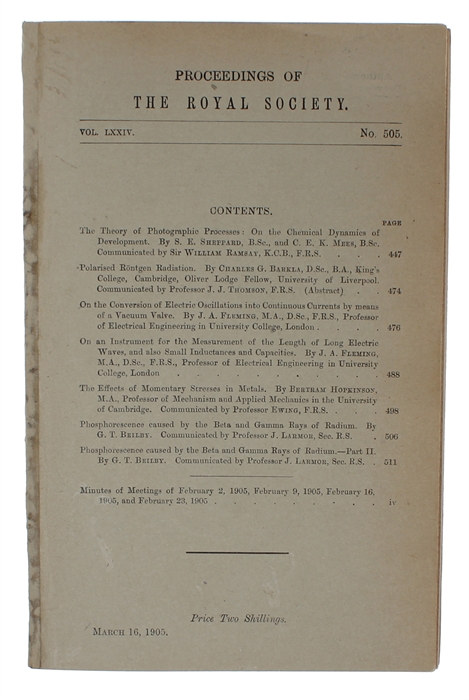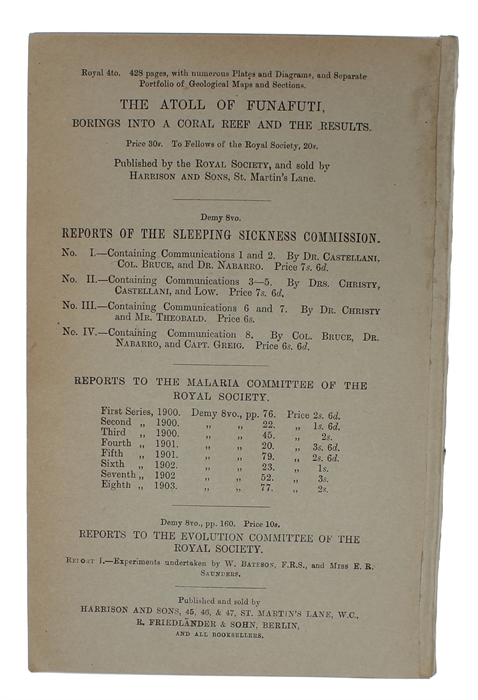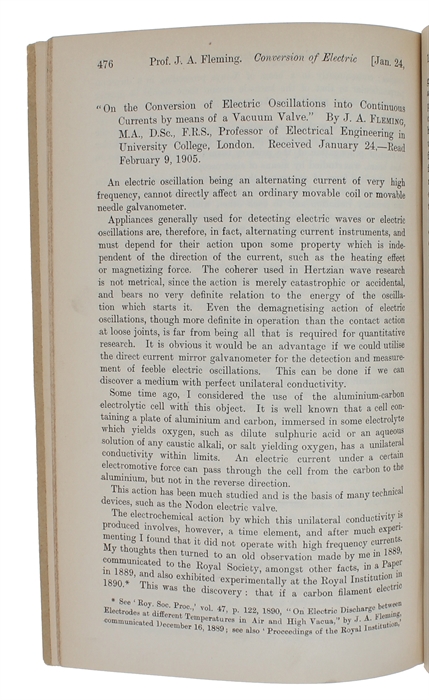THE "FLEMING-VALVE"
FLEMING, (JOHN AMBROSE).
On the Conversion of Electric Oscillations into Continous Currents by means of a Vacuum Valve. (+) An Instrument for the Measurement of the Lenght of Long Electric Waves, and also Small Inductances and Capacities.
London, Harrison and Sons, 1905.
8vo. In the original printed wrappers. In "Proceedings of the Royal Society of London", vol. 74, No. 505. With new paper back-strip (presumably after having been extracted from a binding). Ex-libris ("Alan. A. C. Swinton") pasted on to verso of title-page. Internally fine and clean. Pp. 476-487; pp. 488-498. [Entire volume: Pp. (2), 447-518].
First printing of these two seminal articles, in which the basic principle of the modern wireless valve, also called the "Fleming Valve", is introduced for the first time, making radio-telephony and broadcasting possible. "The immense superiority of the Fleming thermionic valve to all previous detectors of wireless waves caused it to be widely used as an efficient and reliable detector." (PMM). When Lee DeForest perfected the "grid" in 1907, Fleming's wireless signals could be amplified to the degree necessary to make radio-telephony and broadcasting possible. From the library of Alan Archibald Campbell-Swinton (1863-1930), Electrical engineer, member of the Royal Society.
The Edison effect was first described in a paper by William Henry Preece, who was shown an experiment by Edison "On a peculier of Glow-Lamps when raised to high Incasdence", 1885. This effect was known as the "Edison effect", and in 1890 Fleming, an electrical engineer who had worked with Edison Company in London and was now professor at University College, began a careful study of this phenomenon in carbon filament lamps. In 1904 he was able to demonstrate that this occurred not only with electric waves but also with wireless waves. He thus introduced the basic principle of the modern wireless valve, which permits only unilateral conductivity. (see PMM No. 396).
Shiers, Early Television. A Bibliographical Guide to 1940, no. 323 (for the first article here present); the article has been reprinted in George Shiers, ed. !The Telephone: An Historical Anthology", 1977.
PMM no. 396 (for the first article here present).
Order-nr.: 59850



